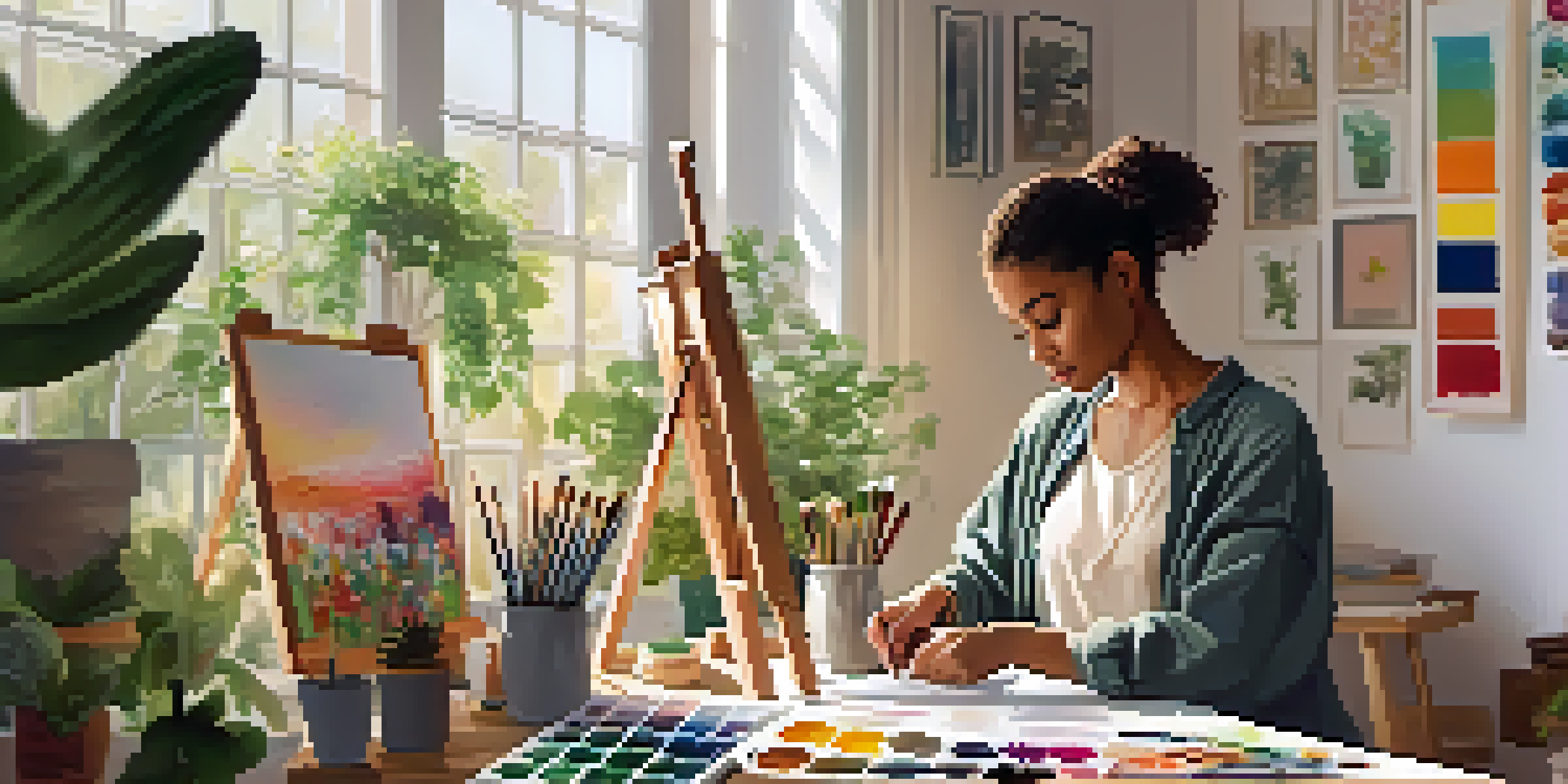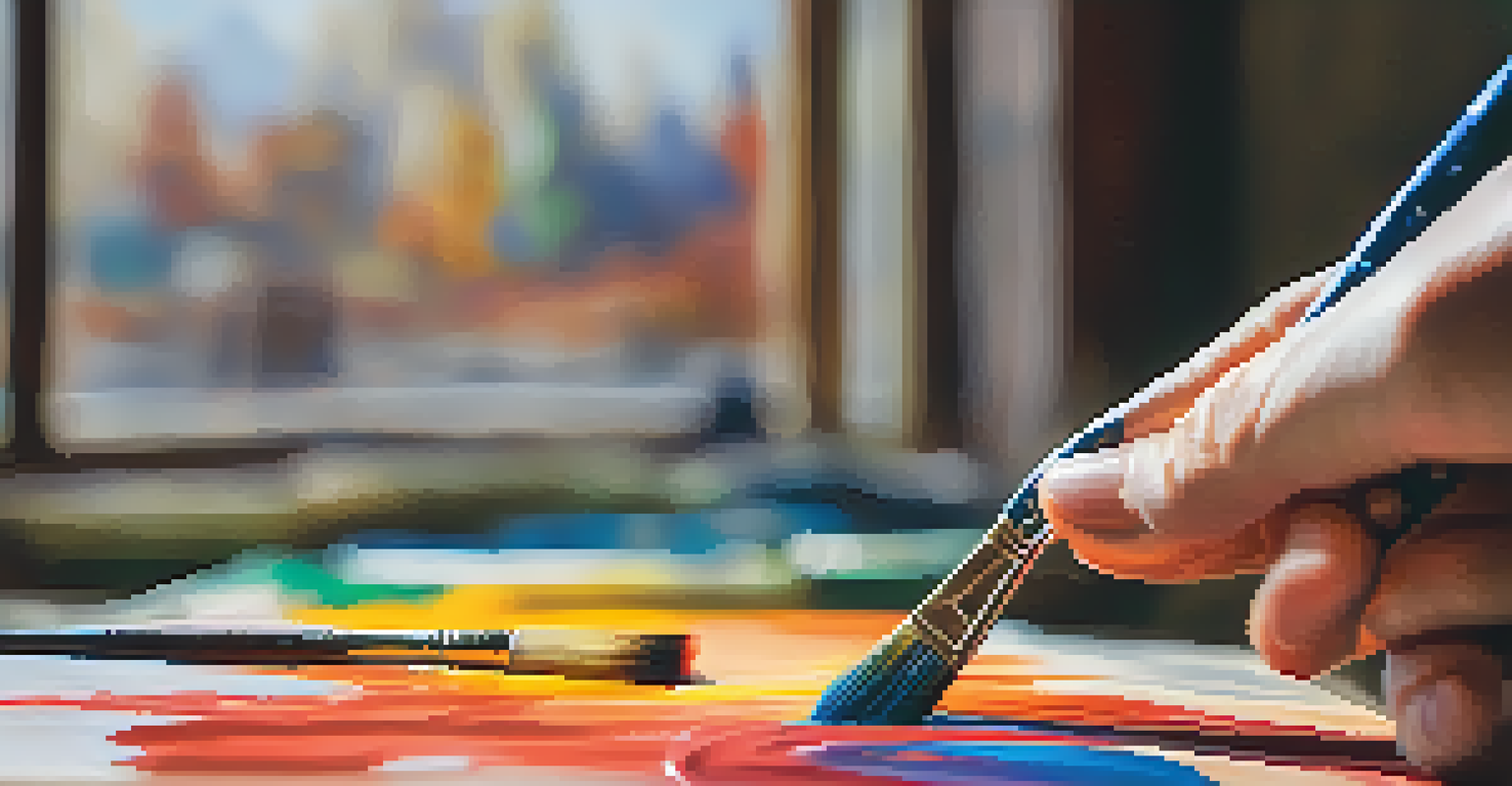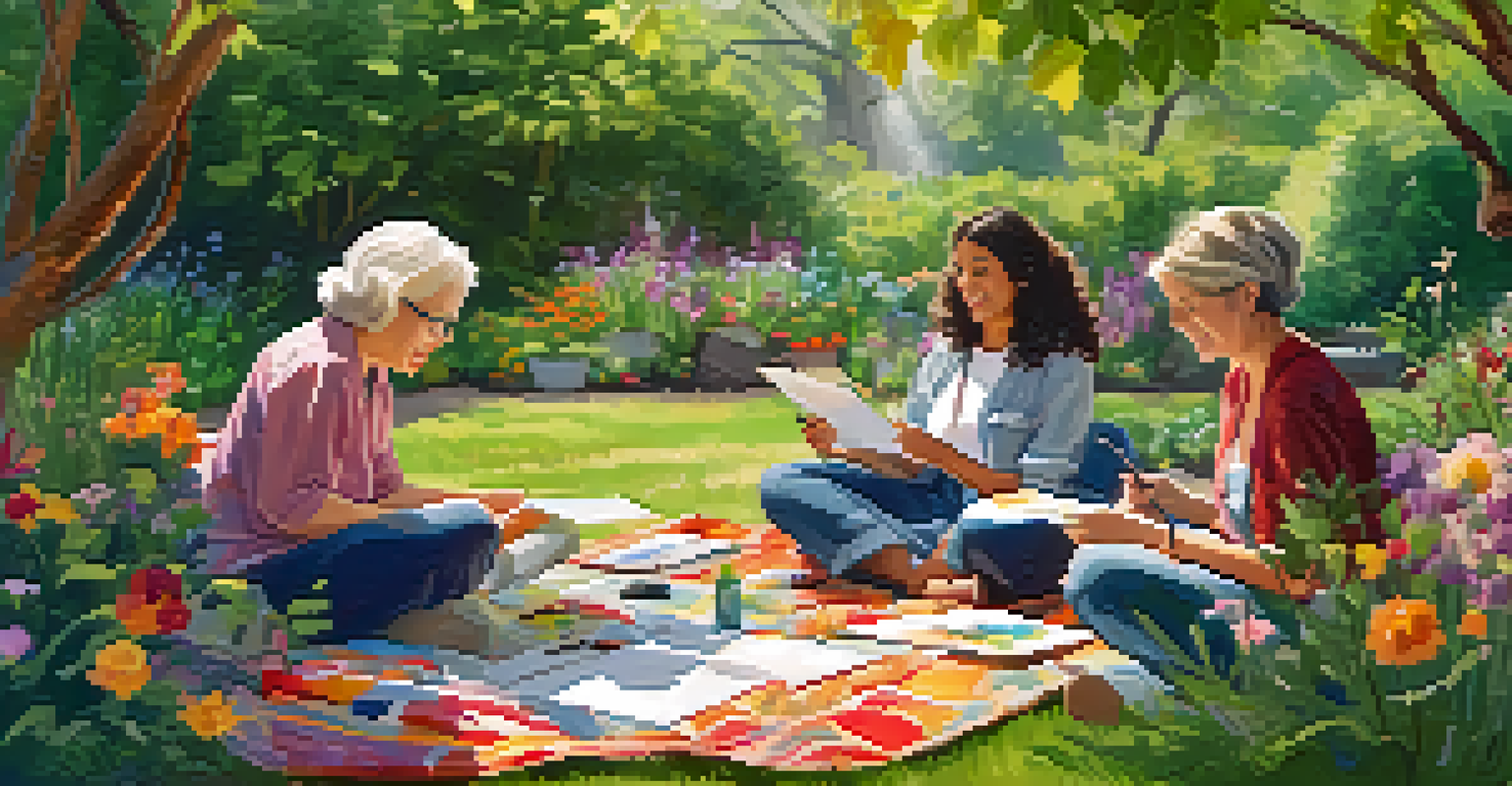Art Therapy: How Marijuana Can Facilitate Emotional Healing

Understanding Art Therapy and Its Benefits
Art therapy is a creative approach that uses artistic expression to help individuals explore their emotions. By engaging in various art forms, clients can communicate feelings that might be difficult to express verbally. This process can be particularly beneficial for those dealing with trauma, anxiety, or depression.
Art is the most beautiful of all lies; it is a lie that reveals the truth.
The therapeutic nature of art allows individuals to create in a safe environment, fostering self-discovery and personal growth. Many find that the act of creating art can be a powerful outlet for emotions, facilitating healing and understanding. Moreover, art therapy has been shown to enhance self-esteem and promote emotional resilience.
Whether through painting, drawing, or sculpting, the act of making art serves as a bridge between the mind and body. It encourages mindfulness and presence, allowing individuals to process their feelings more effectively. This approach to therapy has gained popularity due to its holistic nature, addressing both emotional and psychological well-being.
The Role of Marijuana in Emotional Healing
Marijuana, particularly its therapeutic properties, has been recognized for its potential to alleviate symptoms of anxiety and depression. Many individuals turn to cannabis as a natural alternative to traditional medications, seeking relief from their emotional burdens. By interacting with the endocannabinoid system, marijuana can help regulate mood and promote a sense of calm.

When used responsibly, marijuana can provide a sense of relaxation and openness, making it easier for individuals to engage in creative activities. This can be particularly helpful during art therapy sessions, where the goal is to explore deep-seated emotions. The combination of art and cannabis allows for a more fluid expression of feelings, enhancing the therapeutic experience.
Art Therapy Fosters Emotional Healing
Art therapy encourages individuals to express emotions creatively, facilitating self-discovery and personal growth.
Furthermore, cannabis can mitigate feelings of fear or stress, which often hinder the creative process. By lowering the barriers to self-expression, individuals may find themselves more willing to delve into their emotions and tackle difficult subjects through their art. This synergy between marijuana and art therapy can lead to profound emotional insights and healing.
How Marijuana Enhances the Art Therapy Experience
Integrating marijuana into art therapy can create a unique environment that fosters creativity and emotional exploration. Many artists have reported that cannabis allows them to see their work from a different perspective, often leading to unexpected breakthroughs. This shift in perception can be invaluable during therapeutic sessions.
Creativity takes courage.
The use of marijuana may also reduce inhibitions, encouraging individuals to take risks in their artistic expression. This can result in more authentic creations that reflect true emotions, ultimately facilitating deeper healing. By breaking down mental barriers, cannabis can help clients tap into their subconscious and express feelings that have been suppressed for too long.
Additionally, the calming effects of marijuana can help individuals focus better during their art sessions. This enhanced concentration can lead to a more immersive experience, allowing for greater emotional release and connection with one’s artwork. As a result, the therapeutic benefits of both art and cannabis can work together harmoniously.
Finding the Right Strain for Art Therapy
Choosing the right strain of marijuana is crucial for enhancing the art therapy experience. Different strains have varying effects; some may promote relaxation while others can stimulate creativity. Sativa strains, for example, are often associated with increased energy and inspiration, making them ideal for creative pursuits.
On the other hand, indica strains are known for their calming effects, which can help alleviate anxiety and promote a sense of peace. Depending on the individual's needs and emotional goals, a thoughtful selection of strain can profoundly impact the therapeutic process. This personalized approach ensures that clients can maximize the benefits of both art and cannabis.
Marijuana Enhances Creative Expression
When used responsibly, marijuana can help individuals relax and engage more fully in the creative process during art therapy.
Ultimately, consulting with a knowledgeable professional or a dispensary can help individuals find the right strain for their specific needs. By understanding the different effects of various strains, clients can tailor their experience to support their artistic journey and emotional healing more effectively.
Creating a Safe Space for Healing
A safe and supportive environment is essential for effective art therapy. This is where individuals can freely express themselves without fear of judgment. When combined with marijuana, this safe space becomes even more critical, as individuals explore deeper emotional territories.
Setting up a comforting atmosphere with calming music, warm lighting, and inviting materials can help clients feel at ease. When individuals know they are in a non-judgmental space, they are more likely to open up and share their feelings through their art. This supportive approach enhances the overall therapeutic experience.
Moreover, having a trained art therapist guiding the process can ensure that clients feel secure as they navigate their emotions. The therapist can provide valuable insights and techniques to help individuals articulate their feelings through art. Together, the combination of a safe environment and the right guidance allows for profound emotional healing.
Real-Life Success Stories of Art Therapy and Marijuana
Many individuals have shared transformative experiences combining art therapy and marijuana in their healing journeys. One participant, for instance, found that cannabis helped her overcome her fear of expressing herself through painting. With the aid of a supportive therapist, she created pieces that vividly depicted her emotions, leading to significant breakthroughs.
Another story involves a veteran dealing with PTSD who turned to art therapy and marijuana for relief. He discovered that, while under the influence of cannabis, he could access memories and emotions he had long buried. This new access allowed him to create impactful art that told his story, fostering a deeper understanding of his experiences.
Personalized Strains Maximize Benefits
Choosing the right strain of marijuana can significantly enhance the therapeutic experience by aligning with individual emotional needs.
These anecdotes illustrate the power of merging art therapy with the therapeutic use of marijuana. Each journey is unique, yet they all highlight the potential for healing and self-discovery when individuals are empowered to explore their emotions in a supportive environment.
Considerations and Responsible Use of Marijuana
While the combination of art therapy and marijuana can be beneficial, it's important to approach this practice responsibly. Individuals should be mindful of their consumption habits and choose to use cannabis in moderation. This ensures that the effects enhance creativity without overwhelming or impairing the therapeutic process.
Consulting with a healthcare professional is also advisable, especially for those with underlying health conditions or those taking medications. A professional can provide guidance on safe usage and help determine the best strains for individual needs. This precautionary approach can prevent any adverse reactions during therapy.

Lastly, being aware of local laws regarding marijuana use is crucial. As regulations vary widely, understanding the legal landscape can help individuals make informed decisions about their therapeutic practices. By prioritizing responsible use, individuals can fully enjoy the healing benefits of combining art therapy and marijuana.